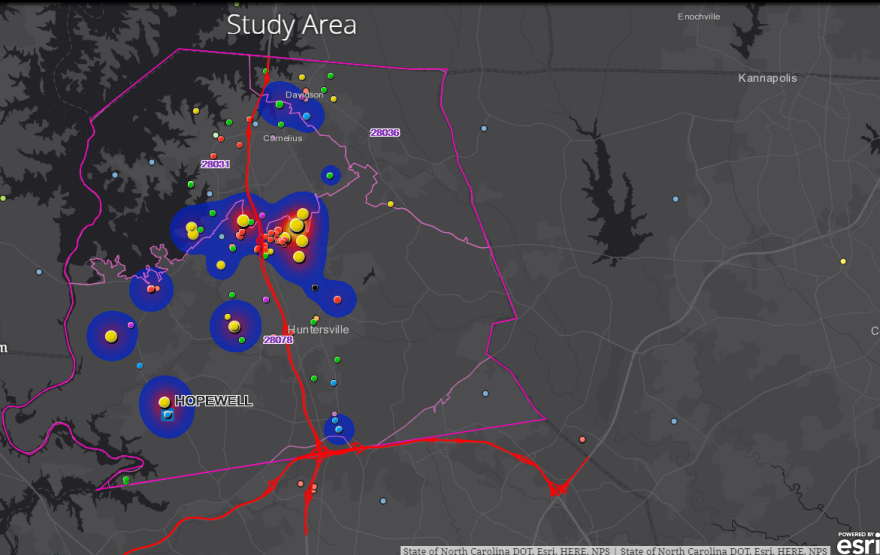For nearly 10 years, residents of Huntersville have been puzzled.
At least 13 people connected to the town--population 57,000--have been diagnosed with a rare eye cancer that affects about six out of every 1,000,000 people. Another three have been diagnosed in nearby Cornelius.
People in Mooresville, about 15 miles north, are asking similar questions about high rates of thyroidcancer in theirtown but there has not been much progress in getting their queries answered.
Kenny and Sue Colbert lost their daughter, Kenan Colbert Koll, to a rare form of eye cancer called ocular melanoma, or uveal melanoma, in May 2014.
Koll had her eye removed soon after she was diagnosed and wore a prosthetic. She died at age 28.
“I never tire of telling Kenan’s story. It’s a way that we keep her with us and her memory alive,” said Sue Colbert.
Several months after Koll’s diagnosis, a young woman who had attended Hopewell High School with Koll was diagnosed with the same disease.
Since 2002, researchers have documented at least 16 cases of the rare eye cancer with connections to Huntersville and Cornelius.
The disease typically affects people above the age of 50. But in the two North Carolina towns, all but four patients were under 50--and seven were younger than 32.

Kenny Colbert, Koll’s dad, said residents are concerned something in the environment is contributing. He said they wonder, “My kids are out and about around the entire county. Are they going to be exposed to this?”
“There’s a lot of things that we’re exposed to all the time, so it’s hard to know when those exposures might have taken place,” said state Epidemiologist Zack Moore.
Moore said some patients can develop or be diagnosed with a cancer years or decades after being exposed to something and it’s difficult to pinpoint a specific cause for cancer.
North Carolina researchers visited Huntersville in 2015 and could not find any environmental causes.
About 15 miles north of Huntersville, in Iredell County, which includes Mooresville, nearly 22 out of every 100,000 people were diagnosed with thyroid cancer between 2012 and 2016, according to a state health department report.
That is nearly double the statewide rate.
Susan Wind moved from Mooresville to Florida after her daughter was diagnosed with thyroid cancer about two years ago at age 17. She’s since become an activist and raised $100,000 for Duke University scientists to test Mooresville’s water, soil and air.
Wind is convinced there’s an environmental cause for the cancer.
Researcher Avner Vengosh said so far the study has ruled out drinking water.
Mooresville is near the Marshall Steam Station, a coal powerplant on Lake Norman operated by Duke Energy. Coal ash, a byproduct from burning coal, contains contaminants like mercury and arsenic but has not been directly linked to thyroid cancer. The power company has said based on existing research, coal ash is not hazardous.
In July, an expert panel recommended North Carolina health officials study whether there is a connection between coal ash and thyroid cancer in Mooresville.
Researchers started an ocular melanoma registry to keep track of eye cancer patients.
State lawmakers passed a budget that included $100,000 to research the cause of ocular melanoma in Huntersville and Cornelius, but the money is tied up in the budget stalemate between Gov. Roy Cooper and Republican lawmakers.



